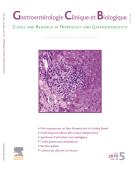Anti-TNF-alpha treatment strategies: results and clinical perspectives - 18/12/09
Summary |
The advent of anti-TNF therapies has led to a significant expansion of the therapeutic armamentarium for inflammatory bowel diseases. Control of inflammation has been achieved with three biologic agents infliximab, adalimumab and certolizumab pegol. All agents are effective in both induction and maintenance of remission. For fistula healing in Crohn’s disease, both infliximab and adalimumab have been shown to be effective, whereas for mucosal healing hard evidence is only available for infliximab. Anti-TNF agents appear to be more effective in patients who have a shorter disease history and who have not yet been treated with any of these agents. There is a clear tendency to use anti TNF therapy earlier in the course of inflammatory bowel disease, but predictive markers to select patients who really need these therapies are urgently needed.
Il testo completo di questo articolo è disponibile in PDF.Résumé |
Les traitements anti-TNF ont considérablement modifié la prise en charge des maladies inflammatoires chroniques intestinales. Trois anticorps anti-TNF ont ainsi permis un contrôle plus efficace de l’inflammation muqueuse digestive : l’infliximab, l’adalimumab et le certolizumab pegol. Ces trois médicaments sont efficaces à la fois pour l’induction et pour le maintien de la rémission. Dans les formes fistulisantes de la maladie, l’infliximab et l’adalimumab ont prouvé leur efficacité, seul l’infliximab ayant pour l’instant montré sa capacité à cicatriser la muqueuse. Ces traitements sont plus efficaces chez les malades ayant une maladie plus récente, et chez ceux n’ayant jamais été traités par ce type d’agents biologiques. Si une tendance générale à une utilisation plus précoce de ces molécules dans la prise en charge thérapeutique des maladies inflammatoires chroniques intestinales semble se dégager, il n’en reste pas moins qu’il est nécessaire de trouver des marqueurs prédictifs capables de mieux identifier les malades auxquels l’utilisation de ces traitements apporte le plus de bénéfices.
Il testo completo di questo articolo è disponibile in PDF.Mappa
Vol 33 - N° S3
P. S209-S216 - Marzo 2009 Ritorno al numeroBenvenuto su EM|consulte, il riferimento dei professionisti della salute.


